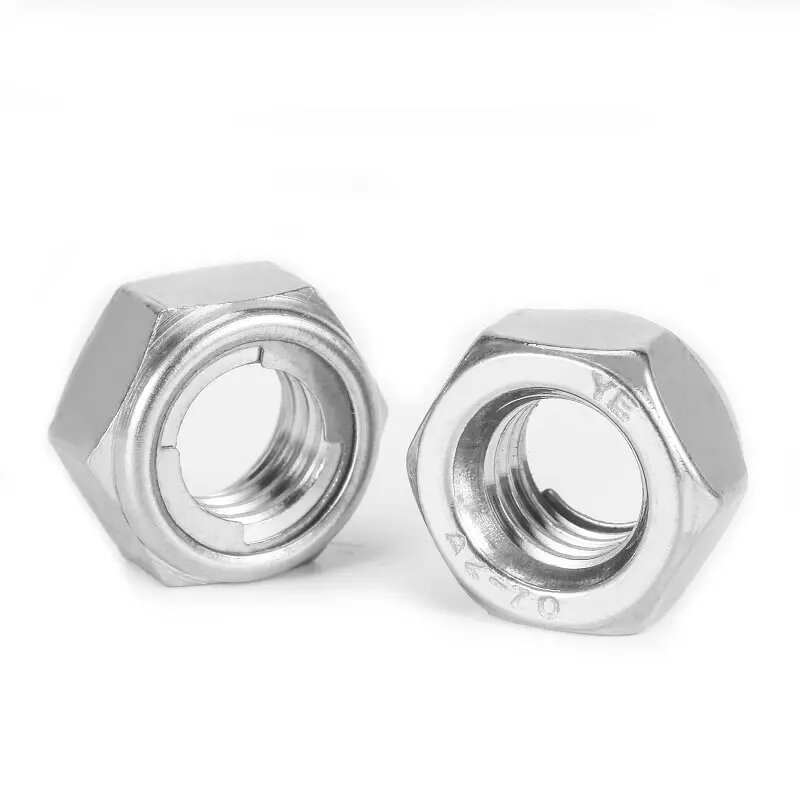Lock nut types are essential components in mechanical and structural assemblies, designed to prevent loosening under vibration and dynamic loads. Among the various lock nut types available, stainless steel DIN980M metal lock nuts, also referred to as M-type all-metal lock nuts, represent a widely utilized category. These nuts are engineered as one-piece, fully metallic fasteners, distinguished by their integrated prevailing torque feature. This design ensures consistent clamping force and reliable performance in standard applications, making them a fundamental choice in industries such as machinery manufacturing and automotive engineering.
The two-piece metal lock nut, a significant variant among lock nut types, enhances resistance to rotation by incorporating an additional metallic element within the standard torque section. This configuration increases frictional forces between the nut and the bolt threads, effectively inhibiting spontaneous loosening. Typically embedded within a standard hex nut, this type provides a straight forward yet robust solution for maintaining assembly integrity. Its primary function is to secure the nut in position, thereby safeguarding connections in environments subject to cyclic stresses.
A key distinction among lock nut types lies in their operational tolerances, particularly regarding temperature resistance. Unlike non-metallic or nylon-insert lock nuts, those conforming to DIN985 or DIN982 standards, all-metal variants like the stainless steel M-type nut are capable of withstanding elevated temperatures. They remain fully functional in conditions exceeding 150 degrees Celsius, where polymer-based inserts would degrade. This high-temperature resilience ensures a persistent locking effect, making them indispensable in applications like engine components or exhaust systems.
The selection of appropriate lock nut types is critical for ensuring long-term safety and reliability. Stainless steel construction offers excellent corrosion resistance, further enhancing the durability of these fasteners in harsh or outdoor environments. Engineers and designers must consider factors such as temperature ranges, vibrational exposure, and required maintenance cycles when choosing between different lock nut types to optimize performance and service life.
Understanding the specific characteristics and advantages of various lock nut types, including the stainless steel DIN980M M-type nut and the two-piece metal lock nut, is paramount for successful engineering design. Their ability to provide dependable, reusable locking action under demanding conditions underscores their importance. As industrial requirements evolve, these robust lock nut types continue to play a vital role in ensuring the security and longevity of fastened connections.
Post time: Oct-23-2025


